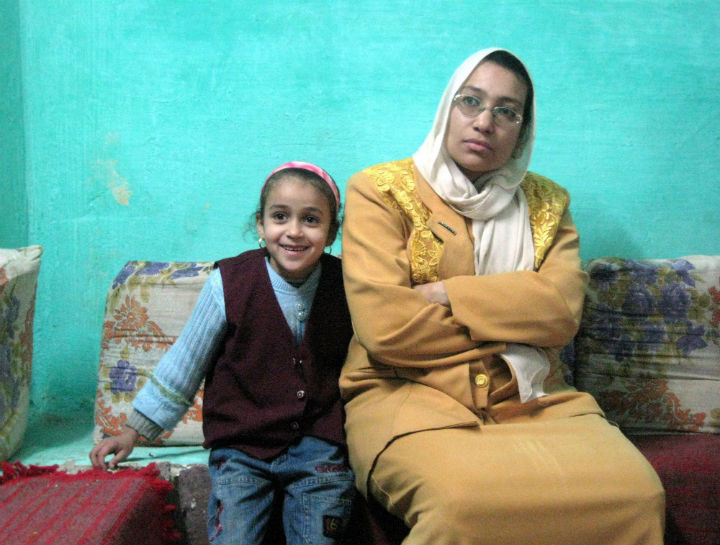The United Nations recently marked the International Day of Zero Tolerance for Female Genital Mutilation (FGM), but two U.S. gynecologists are suggesting it may be worth a compromise when it comes to the practice.

In their paper published online Sunday by the Journal of Medical Ethics, Drs. Kavita Shah Arora and Allan J. Jacobs say the prevalence of FGM among minors in numerous countries around the world remains stable despite efforts to curb what the World Health Organization calls a violation of human rights and an “extreme form of discrimination against women.”
Arora and Jacobs say a recategorization of non-therapeutic procedures would allow for practices like a “small nick” in the skin of the vulva, the removal of the hood of the clitoris or labiaplasty to be considered female genital alteration (FGA) rather than mutilation — something they say is no worse than male circumcision.
Other forms of FGM, procedures that would affect sexual activity and reproduction or put well-being at risk, would remain outlawed, Arora and Jacobs wrote.
The United Nations estimates some 200 million women and girls, largely in Africa and the Middle East, have had their genitals cut, including in some cases removing the clitoris, putting them at risk of suffering health and reproductive complications or even death.
- ‘Bacterial vampirism’: Deadly pathogens attracted to human blood, study finds
- Shoppers faces proposed class action over claims company is ‘abusive’ to pharmacists
- Most Canadian youth visit dentists, but lack of insurance a barrier
- Budget 2024: Liberals look to offset drug plan cost with higher smoking, vaping taxes
So the suggestion from the two gynecologists is to take this new approach to find a balance between what some see as a tradition rooted in culture and religions and an act that is subject to varying official bans in 39 countries.
According to UNICEF, nearly half of all women and girls who have endured some form of genital mutilation live in just three countries — Egypt, Ethiopia and Indonesia. In Somalia, Guinea and Djibouti, nearly all of the women and girls in those countries have had their genitals cut.

There are also thousands of women and girls affected by FGM in diaspora communities in the U.K, United States and Canada; Canada banned FGM in 1997 and the federal government has contributed to efforts to abolish the practice.
But Arora and Jacobs argue making all practices that fall under the banner of FGM puts limits on efforts that may ultimately lead to reduce the prevalence of the cutting of women’s genitals.
Liberal Western governments, they say, should rethink which practices should be permitted to be carried out among immigrant communities hailing from countries where such procedures are considered traditional.
“In order to better protect female children from the serious and long-term harms of some types of non-therapeutic FGA, we must adopt a more nuanced position that acknowledges a wide spectrum of procedures that alter female genitalia,” the pair wrote.
“It is essential to describe FGA procedures in a way that is accurate and allows people with different viewpoints to discuss issues respectfully. There are a myriad of ways various cultures alter female external genitalia. These range from minimal to markedly invasive and dangerous.”
The “nick,” they wrote, would be a “de minimis” procedure that would not cause long-term effects, while the removal of the clitoral hood or labiaplasty would be “equivalent or less extensive” than elective procedures like breast implantation or elective labiaplasty “for which affluent women pay thousands of dollars.”
Dr. Gillian Einstein is an associate professor at the University of Toronto who has studied the neurobiological outcomes of female genital cutting.
And while she is against procedures to permanently — and unnecessarily — modify a healthy body, by force or by choice, she told Global News there are many such practices that need to be reconsidered — not just cutting genitals.
When it comes to modifying people’s bodies, she’d rather see a cultural change than shifting laws to permit one kind of cutting over another.
She explained there are women who have undergone forms of genital cutting who are “proud they have had it” while there are many others who are working hard to change cultural norms in their countries and communities.
“I think there’s a confusion over who controls the practice. So it’s women who control the practice, not men,” she said.
“The practice itself does give women a lot of power. And so figuring out other sources of power is a culture change, and I think cultures that have thought about it from that perspective had been a lot more successful in changing the practice.”
Others who are critical of FGM echo the UN’s “zero tolerance” stance.
“Any form of FGM is a violation of a child’s rights,” said Adwoa Kwateng-Kluvitse, head of global advocacy at the charity FORWARD, which campaigns against FGM in Africa and Europe, told Reuters.
“This is very different to male circumcision. With male circumcision there is no intention to attenuate sexual desire, control sexuality or enforce chastity.”
Arianne Shahvisi, a lecturer in medical ethics at Britain’s University of Sussex, argued it comes down to women and girls being able to have a say in what happens to their bodies.
“One must not cause irreversible changes to the body of another person without their consent,” she told Agence France-Presse.




Comments